Science Daily News | 22 Jul 2023

Views (80)
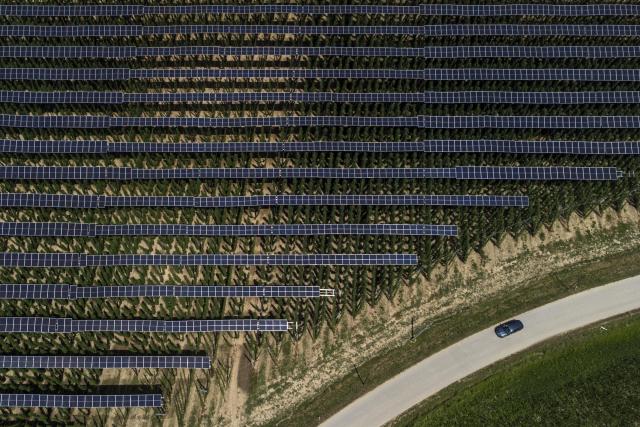
Scientists: Florida Keys coral reefs are already bleaching as water temperatures hit record highs
Some Florida Keys coral reefs are losing their color weeks earlier than normal this summer because of record-high water temperatures, meaning they are under stress and their health is potentially endangered, federal scientists said. The corals should be vibrant and colorful this time of year, but are swiftly going white, said Katey Lesneski, research and monitoring coordinator for Mission: Iconic Reefs, which the National Oceanic and Atmospheric Administration launched to protect Florida coral reefs. Scientists with NOAA this week raised their coral bleaching warning system to Alert Level 2 for the Keys, their highest heat stress level out of five.
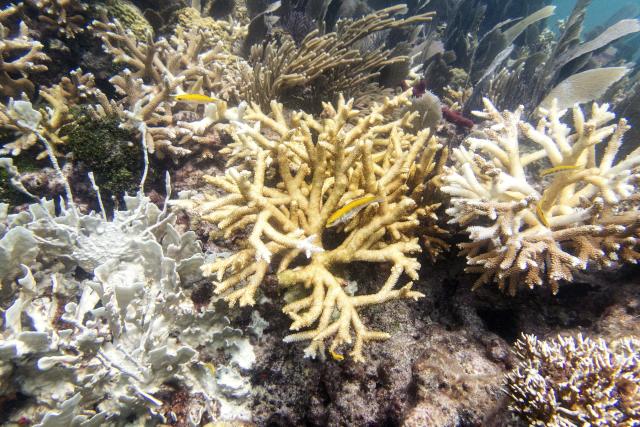
“The corals are pale, it looks like the color’s draining out,” said Lesneski, who has spent several days on the reefs over the last two weeks. “And some individuals are stark white. And we still have more to come.”
Scientists with NOAA this week raised their coral bleaching warning system to Alert Level 2 for the Keys, their highest heat stress level out of five. That level is reached when the average water surface temperature is about 1.8 degrees Fahrenheit (1 degree Celsius) above the normal maximum for eight straight weeks.
Surface temperatures around the Keys have been averaging about 91 degrees (33 Celsius), well above the normal mid-July average of 85 degrees (29.5 Celsius), said Jacqueline De La Cour, operations manager for NOAA’s Coral Reef Watch program. Previous Alert Level 2s were reached in August, she said.
Coral reefs are made up of tiny organisms that link together. The reefs get their color from the algae that live inside them and are the corals’ food. When temperatures get too high, the coral expels the algae, making the reefs appear white or bleached. That doesn’t mean they are dead, but the corals can starve and are more susceptible to disease.
Andrew Bruckner, research coordinator at the Florida Keys National Marine Sanctuary, said some coral reefs began showing the first signs of bleaching two weeks ago. Then in the last few days, some reefs lost all their color. That had never been recorded before Aug. 1. The peak for bleaching typically happens in late August or September.
“We are at least a month ahead of time, if not two months,” Bruckner said. "We’re not yet at the point where we are seeing any mortality ... from bleaching. It is still a minor number that are completely white, certain species, but it is much sooner than we expected."
Because of climate change and other factors, the Keys waters have lost 80% to 90% of their coral over the last 50 years, Bruckner said. That affects not only marine life that depends on the reefs for survival, but also people — coral reefs are a natural buffer against storm surge from hurricanes and other storms. There is also an economic impact because tourism from fishing, scuba diving and snorkeling is heavily dependent on coral reefs.
“People get in the water, let's fish, let's dive — that's why protecting Florida's coral reef is so critical,” De La Cour said.
Both scientists said it is not “all doom and gloom.” A 20-year, large-scale effort is underway to rebuild Florida's coral back to about 90% of where it was 50 years ago. Bruckner said scientists are breeding corals that can better withstand the heat and are using simple things like shade covers and underwater fans to cool the water to help them survive.
“We are looking for answers and we are trying to do something, rather than just looking away,” Bruckner said.
Breeding corals can encourage heat resistance in future generations of the animals, said Jason Spadaro, coral reef restoration program manager for Mote Marine Laboratory & Aquarium in Sarasota, Florida. That could be vital to saving them, he said.
Spadaro and others who have visited the corals said they have noticed the coral bleaching is worse in the lower Keys than in the more northern parts of the area. The Keys have experienced bad bleaching years in the past, but this year it is “really aggressive and it's really persistent,” he said.
“It's going to be a rough year for the reef. It hammers home the need to continue this important work,” he said.
The early bleaching is happening during a year when water temperatures are spiking earlier than normal, said Ross Cunning, a research biologist at Shedd Aquarium in Chicago. The Keys are experiencing water temperatures above 90 degrees Fahrenheit (32 degrees Celsius), which would normally not occur until August or September, he said.
The hot water could lead to a “disastrous bleaching event” if it does not wane, Cunning said.
“We're seeing temperatures now that are even higher than what we normally see at peak, which is what makes this particularly scary,” Cunning said.
De La Cour said she has no doubt that the warming waters are caused by human-made global warming and that needs to be fixed for coral to survive.
“If we do not reduce the greenhouse gas emissions we are emitting and don't reduce the greenhouse gases that are already in the atmosphere, we are creating a world where coral reefs cannot exist, no matter what we do," she said.
___
Whittle reported from Portland, Maine.
___
Climate records tumble, leaving Earth in uncharted territory - scientists
A series of records on temperature, ocean heat, and Antarctic sea ice are "unprecedented", some scientists say.

A series of climate records on temperature, ocean heat, and Antarctic sea ice have alarmed some scientists who say their speed and timing is "unprecedented".
Dangerous heatwaves sweeping Europe could break further records, according to the UN.
It is hard to immediately link these events to climate change because weather - and the Earth's oceans - are so complex.
Studies are underway, but scientists already fear some worst-case scenarios are unfolding.
"I'm not aware of a similar period when all parts of the climate system were in record-breaking or abnormal territory," Thomas Smith, an environmental geographer at London School of Economics, says.
"The Earth is in uncharted territory" now due to global warming from burning fossil fuels, as well as heat from the first El Niño - a warming natural weather system - since 2018, says Imperial College London climate science lecturer Dr Paulo Ceppi.
Here are four climate records broken so far this summer - and what they mean.
The world experienced its hottest day ever recorded in July, breaking the global average temperature record set in 2016.
Average global temperature topped 17C for the first time, reaching 17.08C on 6 July, according to EU climate monitoring service Copernicus.
Ongoing emissions from burning fossil fuels like oil, coal, and gas are behind the planet's warming trend.
This is exactly what was forecast to happen in a world warmed by more greenhouse gases, says climate scientist Dr Friederike Otto, from Imperial College London.
"Humans are 100% behind the upward trend," she says.
"If I'm surprised by anything, it's that we're seeing the records broken in June, so earlier in the year. El Niño normally doesn't really have a global impact until five or six months into the phase," Dr Smith says.
El Niño is the world's most powerful naturally occurring climate fluctuation. It brings warmer water to the surface in the tropical Pacific, pushing warmer air into the atmosphere. It normally increases global air temperatures.
The average global temperature in June this year was 1.47C above the typical June in the pre-industrial period. Humans started pumping greenhouse gases into the atmosphere when the Industrial Revolution started around 1800.
Asked if summer 2023 is what he would have forecasted a decade ago, Dr Smith says that climate models are good at predicting long-term trends but less good at forecasting the next 10 years.
"Models from the 1990s pretty much put us where we are today. But to have an idea about what the next 10 years would look like exactly would be very difficult," he says.
"Things aren't going to cool down," he adds.
The average global ocean temperature has smashed records for May, June and July. It is approaching the highest sea surface temperature ever recorded, which was in 2016.
But it is extreme heat in the North Atlantic ocean that is particularly alarming scientists.
"We've never ever had a marine heatwave in this part of Atlantic. I had not expected this," says Daniela Schmidt, Prof of Earth Sciences at the University of Bristol.
Directly attributing this heatwave to climate change is complex, but that work is ongoing, Prof Schmidt says.
What is clear is that the world has warmed and the oceans have absorbed most of that heat from the atmosphere, she explains.
"Our models have natural variability in them, and there are still things appearing that we had not envisaged, or at least not yet," she adds.
She emphasises the impact of this heat on marine ecosystems, which produce 50% of the world's oxygen.
"People tend to think about trees and grasses dying when we talk about heatwaves. The Atlantic is 5C warmer than it should be - that means organisms need 50% more food just to function as normal," she says.
Alarm bells are ringing for scientists as they try to unpick the exact link to climate change.
A warming world could reduce levels of Antarctic sea-ice, but the current dramatic reduction could also be due to local weather conditions or ocean currents, explains Dr Caroline Holmes at the British Antarctic Survey.
She emphasises it is not just a record being broken - it is being smashed by a long way.
"This is nothing like anything we've seen before in July. It's 10% lower than the previous low, which is huge."
She calls it "another sign that we don't really understand the pace of change".
Scientists believed that global warming would affect Antarctic sea-ice at some point, but until 2015 it bucked the global trend for other oceans, Dr Holmes says.
"You can say that we've fallen off a cliff, but we don't know what's at the bottom of the cliff here," she says.
"I think this has taken us by surprise in terms of the speed of which has happened. It's definitely not the best case scenario that we were looking at - it's closer to the worst case," she says.
We can certainly expect more and more of these records to break as the year goes on and we enter 2024, scientists say.
But it would be wrong to call what is happening a "climate collapse" or "runaway warming", cautions Dr Otto.
We are in a new era, but "we still have time to secure a liveable future for many", she explains.
Additional reporting by Mark Poynting and Becky Dale
Farm deaths: More than five killed every year in Northern Ireland
The Farm Safety Foundation says the pace of change remains "far too slow".
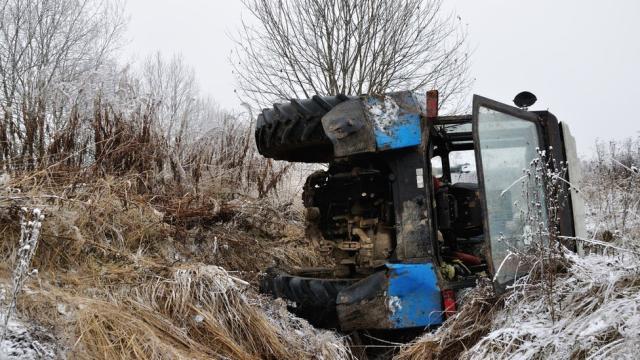
An average of more than five people every year died on Northern Ireland's farms in the past decade.
New figures from the Health and Safety Executive NI (HSENI) show 53 people were killed between January 2013 and December 2022.
It comes as the Farm Safety Foundation says the pace of change is "far too slow".
This week marks the 11th year of Farm Safety Week, which is organised by the foundation.
Stephanie Berkeley, manager of the Farm Safety Foundation, said the key message of Farm Safety Week 2023 was that farmers needed to value themselves.
"Everything is replaceable, you are not," she said.
Ms Berkeley added that the organisation was still having to roll out the campaign because farming continues to have the poorest safety record of any occupation in the UK and Ireland.
She said things were improving and that farmers knew they needed to take their safety seriously.
The HSENI said there had been two fatalities on farms in 2023.
Both victims were men over 60 and both incidents involved machinery.
In 2022, there were three deaths - a fall from six in 2021.
Ms Berkeley said those who died were mostly older people.
"The next generation of farmers have better attitudes and behaviours in relation to safety - but the pace of change is far too slow," she said.
William Irvine, deputy president of the Ulster Farmers Union, said it was important to keep safety awareness high.
He said the work was pressurised and that most accidents on farms tended to be related to falls, animals, machinery and slurry.
"Agriculture tends to involve a lot of lone workers who work with machinery and animals," he said.
"These things can be unpredictable and campaigns like this are important to keep awareness high.
"The message is getting through, but there is still a way to go and there is more to achieve when it comes to farm safety."
Monthlong heat wave to expand into Northern California, parts of Idaho and Oregon
Another day of extreme heat is sweeping across the United States on Friday, with daily high temperature records broken Thursday in several cities including Phoenix at 119 degrees Fahrenheit and Imperial, California, at 118 F. About 84 million people are under heat advisories.
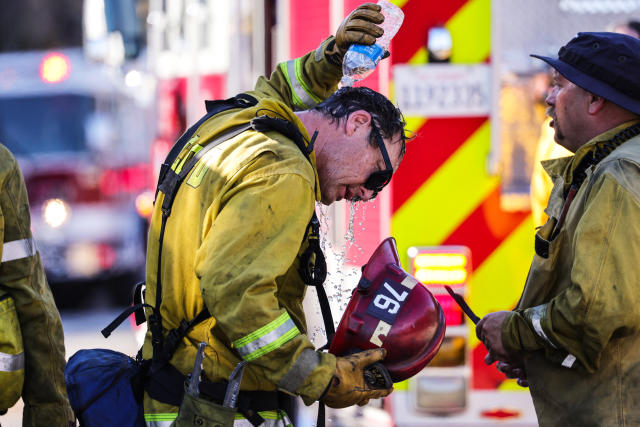
Another day of extreme heat is sweeping across the United States on Friday, with daily high temperature records broken Thursday in several cities including Phoenix at 119 degrees Fahrenheit and Imperial, California, at 118 F.
About 84 million people are under heat advisories. Parts of California, Oregon and Idaho that were previously untouched by the monthlong heat wave are now included in the alerts.
Phoenix is forecast to continue its now 22-day streak of consecutive daily high temperatures registered above 110 F.
Across parts of the South, the Southeast and the Gulf Coast, high temperatures and humidity will combine through Sunday to create widespread heat that feels more like 105-110 F.
AP PHOTOS: Little relief as record temperatures sizzle around the world
Phoenix has broken its own streak of blistering hot days, southern Europeans and millions of people on vacation there broiled under near-record temperatures, while parts of the Middle East tested the limits of what the human body is capable of enduring. Parts of southern Europe also have gone up in flames, with wildfires raging in Greece that forced evacuations and highway closures this week. People returned to their homes Tuesday when a fire finally receded after spending the night on beaches, in hotels and in public facilities.
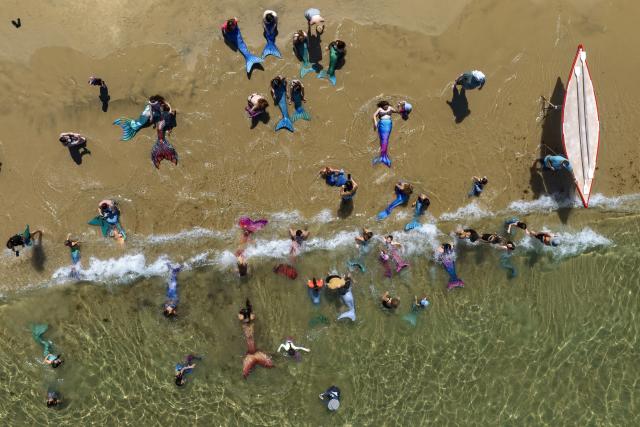
A wave of heat is not loosening its grip on the globe.
The heat is expected to worsen again over the next few days.
People around the world sought shade and water for respite, including in Lebanon, Spain and Turkey, where even those used to high temperatures felt the unusually sweltering summer.
There was some light relief, too, in Israel, where people took to the beach in mermaid tails.
Climate change from the burning of coal, oil and natural gas is causing the world to warm, with the Earth’s average temperature about 2 degrees Fahrenheit (1.1 degrees Celsius) higher than pre-industrial times. It's causing more record-breaking heat and extreme weather events around the world.
___
Hops for beer flourish under solar panels. They're not the only crop thriving in the shade.
The pilot project — a collaboration between Wimmer and local solar technology company Hallertauer Handelshaus — was set up in the fall of last year. The electricity made at this farm can power around 250 households, and the hops get shade they'll need more often as climate change turbocharges summer heat.

AU in der HALLERTAU, Germany (AP) — Bright green vines snake upwards 20 feet (six meters) toward an umbrella of solar panels at Josef Wimmer’s farm in Bavaria.
He grows hops, used to make beer, and in recent years has also been generating electricity, with solar panels sprawled across 1.3 hectares (32 acres) of his land in the small hop-making town of Au in der Hallertau, an hour north of Munich in southern Germany.
Beer-making hops can suffer if exposed to too much sun, said Bernhard Gruber, who's managing the project's solar component — and since there were already solar installations on the farm, it made sense to give them a second purpose by mounting them on poles above the crops.
In addition to shielding plants from solar stress, the shade could mean “water from precipitation lasts longer, leaving more in the soil” and that “the hops stay healthier and are less susceptible to diseases,” Gruber said. A scientific analysis of the benefits for the plants will be concluded in October.
The farm is working with researchers to understand how to get the balance right, so the hops get enough shade and sunlight for the best harvests each year.
“You can get your renewables from the land that you do have covered and you don’t need to do these massive solar arrays on good agricultural land, which is what you’ve tended to see around to date," said Elinor Thompson, a reader at Greenwich University who’s leading the research.
Thompson, a plant biologist, and her team are working with a fruit farm in Kent in southern England to make sure the plants also get the best out of solar structures.
“Nobody can afford to lose crop, especially in current conditions,” she said. “We are assuming that British summers are going to get hotter, we have a problem with water shortages, we need to be efficient in all parts of agriculture.”
Having shade where it's useful and monitoring the effects of different arrangements of solar panels on a variety of crops will help the world prepare for a more climate-variable future, Thompson said.
Randle-Boggis said the systems can be used for “climate change resilience and a way of improving the growing environment for crops, while also providing low carbon electricity.” He said that some of the crops under the partial shade of solar panels are using around 16% less irrigation.
The solar-covered farms saw increased yields for maize, Swiss chard and beans, and while growers experienced lower yields for onions and sweet peppers, they still had the added benefit of clean electricity generation.
But crop yields can also “vary depending on the weather conditions because we’re seeing the climate changing,” said Randle-Boggis, although he added he was “really surprised and impressed with some of the results that we’re seeing” for solar-covered crops.
“Maize is grown by about 50% of farmers in Tanzania. Maize is also a sun loving plant. So the fact that we had an 11% yield increase in maize ... is a phenomenal result,” he said.
And Randle-Boggis said these projects can continue to be replicated around the world for many different crops, as long as systems are “designed with the local context in mind.”
A future with more crops under solar is Gruber's hope for beer-making hops, too.
“At the end of the year we will set up another solar park over hops,” which will have about 10 times the electricity-generating potential as the current project, Gruber said.
But that's still just the beginning.
“We're getting lots of inquires from hop farmers," he said, "even from abroad.”
___
Beltaji reported from London.
___
0 Likes
